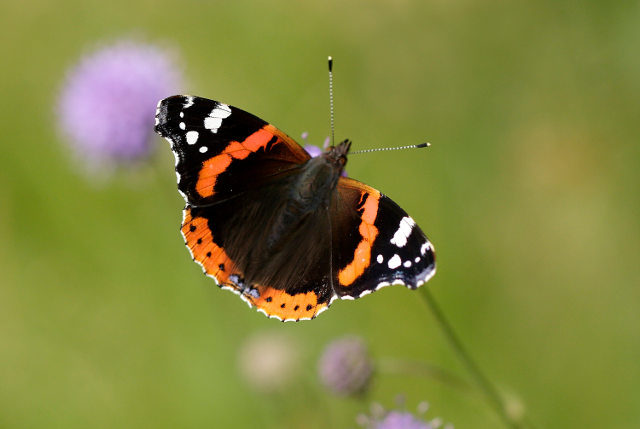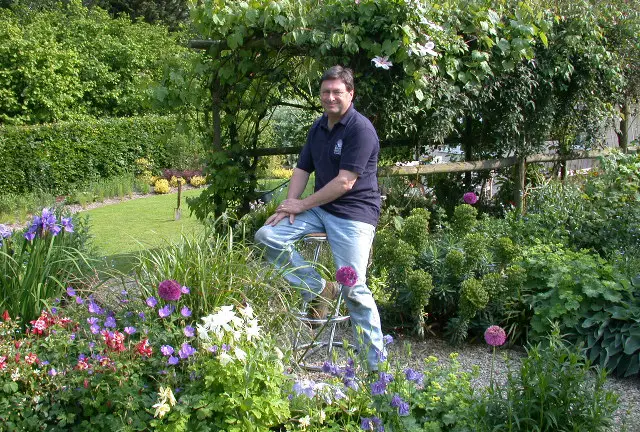Katie shares this latest news on behalf of Butterfly Conservation. Ed
Alan Titchmarsh is calling on gardeners to make a metre for wildlife this summer by providing a refuge for struggling butterflies, moths and other pollinators.
Butterfly Conservation’s (BC) Vice-president and celebrity gardener Alan, is launching the charity’s ‘Plots for Pollinators’ campaign.
The project encourages people to set aside one square metre of their garden or outdoor space to plant a nectar-rich flowerbed, or a colourful container garden.
Delayed emergence for butterflies
Alan said:
“The future of our butterflies, moths and other pollinating insects is under threat, as the places where they live are disappearing.
“The cold start to spring may affect how some butterflies fare this year, as they could experience a delayed emergence, meaning they’ll have less time to feed and breed – but you can help by creating some ‘plots for pollinators’.
“There are so many different flowers that are great nectar sources, like Catmint, Cosmos or Calendula. See if you can find just one square metre and you could attract lots of butterflies this spring and summer, like my favourite, the Red Admiral.
“It doesn’t have to be on the lawn either – you could create a vertical garden on a bit of unused wall or fence and this would make a huge difference for pollinators.”

Image: © Iain H Leach
Under threat from habitat loss
Pollinating insects are important for the fertilisation of many crops, as well as other plants, trees and wild flowers.
Gardens can act as important refuges for pollinators, which are increasingly under threat from habitat loss, agricultural intensification and climate change.
Previously widespread species, such as the Small Tortoiseshell and Garden Tiger moth, have seen their numbers plummet in recent years.
Life without butterflies would be miserable
BC Ambassador and wildlife gardening writer, Kate Bradbury, said:
“Life without butterflies, moths, bees and hoverflies would be miserable, but together we can help reverse their declines.
“Planting just one plot in each of the UK’s estimated 24 million gardens will make a huge difference because if everyone did this, the whole country would be linked with nectar and pollen-rich flowers.”
Take part
The Plots for Pollinators project will run throughout the spring and summer.
To take part,
visit the Website
Alan’s Top Tips on Creating Plots for Pollinators
- Measure out one square metre of outdoor space as a plot of pollinators and fill it with open-flowered, nectar-rich plants. Choose a sunny, sheltered position and group pots together on a patio, grow plants up a fence or wall, or commit an area of a flowerbed.
- Water your plot regularly – ideally from a water butt as this is more environmentally friendly. Frequent watering prevents plants from drying out during a spell of hot weather, especially when in containers, and helps flowers to produce more nectar.
- Remember to water the soil not the plant, as larger leaves can act as an umbrella which prevents water getting to the roots. Remove the rose from your watering can to get nearer the plant base if necessary.
- Put a layer of mulch on the surface of the soil around the plants to help prevent water evaporation and suppress weed growth.
- Always choose peat-free compost and cut down on your use of plastic. Use recyclable and recycled containers or be creative and turn tins and tubs into plant pots. Remember to drill drainage holes in the bottom to prevent waterlogging.
- Dead-heading after flowering keeps plants looking attractive and encourages more blooms.
- Inspire your neighbours to plant a plot for pollinators to create a flowery super highway for the pollinating insects where you live.
- Avoid using harmful pesticides by removing slugs and snails by hand instead. Night is the best time to catch these marauding molluscs in action. Once caught, release them at a safe distance from your plot.
Image: © Butterfly Conservation





